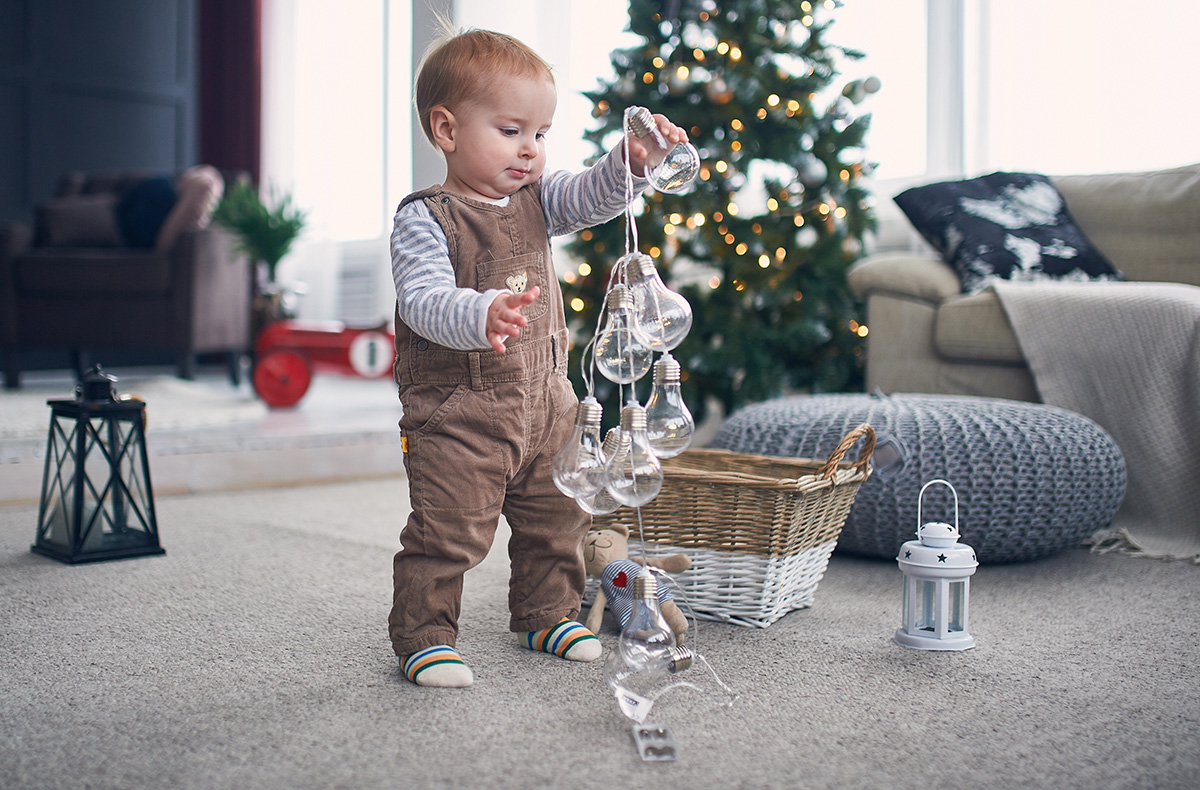While parents certainly love all the cooing and cute sounds infants make, they often start getting antsy to move past the squeaking and gurgling into some real words, especially a “Mama” or a “Dada.” This will come in time, and that time generally lands somewhere in the period of 12 to 18 months.
Structured Babbling and a Baby’s First Conversations
The vast majority of a child’s vocal production during this stage will still be them playing with assorted sounds and trying to get a caregiver’s attention (unfortunately via crying), but you will start to notice the first traces of real communication around 12 months, and not just in the appearance of real words.
By this point, most infants have started to see that there is a sort of rhythm and pattern to all those strange noises the grown-ups are constantly making, and they will start to try to imitate this back and forth in their first “conversations.” If you’ve been narrating your daily activities and flooding your child’s ears with language, they’ll likely start to see that this aural bombardment can be turned into a two-way street. You say, “Look at the ball!” Your child responds with perhaps something that sounds like “Boodle loo loo!” and then waits for you to answer. You smile and say, “Yes! That’s right! It’s a ball.” While this may not be the heart-to-heart conversations you always envisioned having with your child, you are in fact conversing and well on your way to the weightier stuff.
Order of First Words
Most children follow a pattern of word acquisition, with nouns and proper nouns (Ex. ball, doggy, Mama) coming first, and verbs (Ex. eat, look, wave) following a few weeks or months later. Adjectives are usually last in line (Ex. hot, big, yummy), though this is in no way a concrete chronology. A random assortment of other types of words will likely appear throughout this timeframe, including interjections like “yes” and “no” and “NO!”
Pronouns may emerge during this time, but errors are to be expected, such as a baby referring to him or herself in the third person. You can gently correct this, but understand that these mistakes are common and will usually work themselves out over time.
Comprehension and Responding to Questions
Just as you’re starting to understand more of what your baby is saying, your baby is also starting to grasp more of the words coming out of your mouth. You can see this progress, for example, when you say “doggy” and the child automatically looks at your pet dog.
Kids at this stage may also start to respond to simple questions like “Do you want the bottle?” or “Are you ready to go night-night?” They may start answering with a verbal yes or no, likely accompanied by a dramatic shaking of their head.
Repeated Reading
Books and stories play an increasingly significant role here, and you should try to make bedtime stories as routine as possible. Though babies are still not able to grasp much of the language, repetition and re-reading (plus the pictures!) are keys here, and children will benefit from nightly readings of the same small collection of books. Unlike adults, children are big fans of re-reading, so though you may be sick of the umpteenth reading of Sally the Silly Spider, kids are getting more and more out of it each time.
Encouraging Language Development at Home
This is the period when things really start to get fun, as those slightly frightening shrieks and wet gurgles start to become discernible words. Continue dialoguing with your child as much as possible, narrating everything you can just to expose them to as much raw material as possible. This is particularly important for daily routines, from diaper changes to bath time to play time, as familiarity and repeated exposure will help children associate items and activities with their words more quickly. Bedtime stories are one of the most fertile sources of language learning progress, and you can ask questions like “Where’s the duck?” and have your child point to the picture of the duck.
Similar to the back-and-forth element of conversation, children at this age are often also starting to grasp the concept of requests and commands. You can practice this by making a game of it, like “Give me the ball. Thank you!” Children will be delighted to please you most of the time, though they may also get a special thrill out of not doing what you ask. This should be treated as just another fun aspect of the game. You can make a surprised and shocked face and watch them laugh as they withhold the ball.
Milestones and Variability in Language Development
Parents often worry over every minor detail of development unnecessarily, but there are some fairly standard milestones you can use during this stage. Though it’s likely no cause for concern, a total lack of babbling by a year or a first word by 18 months may warrant a quick chat with your GP and maybe checking out some early intervention programs. Again, all children progress differently, but you can always do your best to help them along the way.


